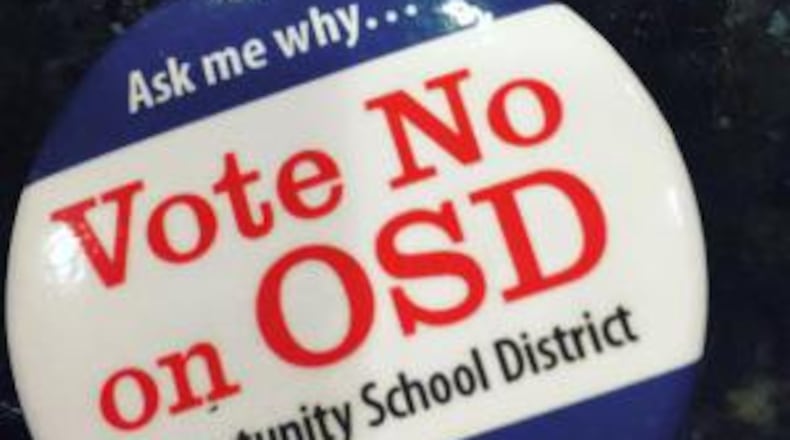Gov. Nathan Deal and the GOP leadership were disappointed with the resounding 2016 defeat of the Opportunity School District, a state takeover plan modeled after Tennessee’s Achievement School District.
Turns out Georgia voters got this one right.
An ongoing evaluation released today by the Tennessee Education Research Alliance at Vanderbilt University’s Peabody College finds students in state takeover schools didn’t perform any better after five years than kids in low-performing schools that received no intervention.
When the ASD began taking over low-performing schools and turning them over to charter management organizations, expectations ran high. The charter networks were among the best in the country, and federal Race to the Top funds and philanthropic donations gilded the ASD effort with an extra $100 million in new funding.
OSD proponents even brought in ASD staff and parents to sell the state takeover idea to wary Georgia voters. As with the ASD, Georgia’s OSD would have allowed an appointed superintendent to place a local school under the management of a charter organization. But the Georgia proposal provided no additional resources or specifics about new curriculum, teaching methods or teacher training. All bets were on new management structures and "flexibility" to yield turnaround.
The flexibility accorded the ASD didn’t produce any turnaround in Tennessee, even with extra funding, said Vanderbilt researcher Gary Henry in a telephone interview today.
“The OSD proposal was even more limited than the ASD,” he said. “Georgia would have brought in charter management organizations to operate the schools and given them autonomy, but there were no additional funds. The ASD had more than $100 million in additional resources. I can see no way that program in Georgia could have ended up improving outcomes for kids.”
However, Henry says Tennessee does offer some guidance for Georgia in how to improve its lowest-performing schools, citing a second turnaround effort controlled by local school districts called Innovation Zones or iZones.
Henry and his colleagues examined both the efficacy of ASD and iZone schools, expanding on a previous study evaluating the two school improvement strategies.
Among the findings:
Through five years of implementation, iZone schools have positive and statistically significant effects on reading, math, and science test scores relative to low performing schools receiving no intervention.
Overall, ASD schools did not gain more or less than low-performing schools receiving no interventions within the first five years of implementation.
Across each of the five years, iZone schools have been relatively successful in sustaining the positive effects they were able to achieve early on.
ASD schools did not gain more or less than comparison schools in any of the five years of turnaround intervention, including after four or five years of turnaround interventions.
I asked Henry why the ASD failed to gain traction. He said the charter models that Tennessee imported didn’t travel well, in part because of constraints put on them by the ASD.
For example, charter schools in the Recovery District in New Orleans became schools of choice open to students across the city, and parents selected a school based on its philosophy and practices. In Tennessee, the charters became the neighborhood schools, so attendance was dictated by a student’s address rather than an informed decision by a family.
Henry also said:
A big factor in charter school success is the ability to place restrictions on students as they enter and expectations after they enroll. For example, many charters only admit kids at the beginning of the year, but Tennessee required them to accept kids throughout the year since the charters were the neighborhood school. That transfer churn – as high as 30 percent in some schools – can keep teachers in catch-up mode.
As the local public school rather than a school of choice, the charters could not exclude students based on enforcement of rules in admissions contracts on attendance and tardiness.
Henry said teacher turnover is showing up as another key factor in why the charter schools could not move the needle. "A lot of charters rely on temporary teachers, bringing in Teach for America teachers," said Henry. "But TFA has not met some of their goals in supplying teachers. And these charters are not retaining their teachers and are unable to develop them because they are gone in two years."
I then asked Henry what the iZone schools did right. He said:
They carefully hired principals and offered differential pay so principals in iZones earned more. In a positive for Georgia, Henry touted the iZones principal training provided by the University of Virginia School Turnaround Program. After the defeat of the OSD, Georgia created a chief turnaround officer to work with struggling schools. Georgia chose Eric Thomas as the CTO, and he is from the UVA program.
The iZone schools offered recruitment, retention and performance bonuses for effective teachers. And they gave bonuses for all personnel based on overall school performance.
Not only did they take care of the talent management piece, iZone schools also invested in focused development of teachers, said Henry.
Almost all iZone schools extended the day and brought in community agencies to create engagement activities for the kids.
The ASD has now hired the former Memphis schools iZone leader Sharon Griffin to oversee its schools, a move Henry applauds.
“She understands that hiring promising charter operators and giving them autonomy isn’t enough,” he said. “They have to not only hire good teachers, but selectively retain the best of them.”
About the Author
Keep Reading
The Latest
Featured


